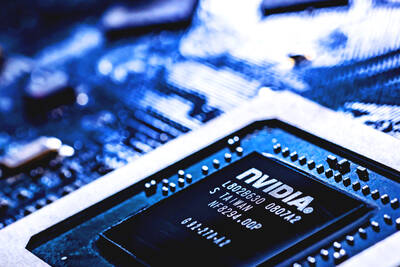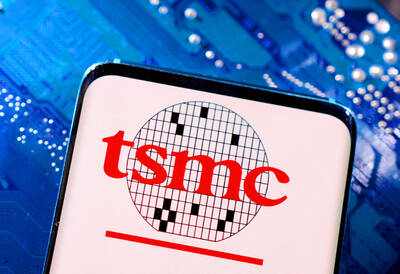Ask Liu Chun-ting (劉軍廷) about future growth engines for his company, LCD maker AU Optronics Corp (友達光電), and he whips out his Kindle e-book in lieu of an answer.
Strong reception for the Kindle, the brainchild of Web retailer Amazon, is attracting a growing number of developers looking to tap interest in devices that let consumers read newspapers, magazines and books in a digital form that updates wirelessly and saves paper.
Sony Corp has joined the paperless wave with its own e-readers, partnering with Google to offer public domain books that are no longer protected by copyright.
Other believers in the dawn of a paperless age include Taiwan’s Netronix Inc (振曜科技), which is making similar models with touchscreens, and Dutch Polymer Vision, set to soon introduce a pocket e-reader with rollable displays.
“We see it as a new industry,” said Liu, a senior vice president at AU Optronics, the world’s No.3 LCD maker whose panels are part of Dell, Hewlett-Packard and Apple PCs, as well as Sony LCD TVs.
“It replaces paper, printing, publishing, text books, and so on,” said Liu, who is in charge of AU Optronics’ consumer display business.
MUST-HAVES
The growing number of models could help to bring down prices and boost sales, making these portable readers the next breed of must-have gadgets.
Weighing less than a typical paperback, e-books use a new generation of light, flexible and interactive display, or e-paper. Once the power is off, its images remain unchanged on the screen as it needs no added light source to read.
Because they require no backlighting like traditional LCDs, e-books consume far less power and are also much lighter. A typical Kindle can be read for days without recharging.
STRUGGLING
The bright future of e-books is particularly attractive to major LCD makers in Asia, including AU Optronics and hometown rival Chi Mei Optoelectronics Corp (奇美電子), at a time when they are struggling with sluggish sales of PCs and flat-screen TVs.
AU Optronics, which booked a record loss in the October-December quarter, is branching out to the new display sector by buying a 21 percent stake in e-paper specialist SiPix Imaging Inc.
Amazon.com Inc’s Kindles have proved a hit since their launch in 2007. Citigroup estimated the US online retailer sold a half-million Kindles last year, about one-third more than the number of iPods sold by Apple in its first year.
Some critics argue that e-books could become the victim of their own success if cellphone makers take notice and start to incorporate the newer LCD technology into their own models and include similar reading applications.
Other kinds of devices could also try to incorporate e-book-like applications.
“There will be more low-cost digital reading platforms coming out. Netbook PCs, for example, are much cheaper,” said Jeremy Huang, who tracks the e-book market for the Market Intelligence & Consulting Institute (MIC, 產業情報研究所), a private industry researcher in Taiwan.
Netbooks, low-cost mini-notebook computers, sell for as little as US$299, while a Kindle retails for US$359 and the latest model of the Sony Reader is priced at about US$349.
Market research firm iSuppli Corp forecasts global e-book display revenue will rise to US$291 million by 2012, representing an annual growth rate of 143 percent from 2007. That is still much smaller than about US$72 billion for large LCDs last year.
SUBSIDIZE
To help drive the e-reader market, some analysts say book publishers could subsidize a low-cost e-reader, or even give one away, with a multi-year subscription, similar to how telecom operators subsidize cellphones in return for service contracts.
The use of e-paper displays in other devices, such as signs, could also help to build economies of scale, bringing down costs.
Supporters imagine a day when e-paper versions of portable newspaper and magazine readers might be rolled up or folded, and carried to the beach or read on the train by commuters.
The timing of e-readers seems particularly good as the ink-stained newspaper market is struggling and some papers are cutting their print editions because of the recession and as more people go online to get news for free.
STRATEGIC DEALS
In February, US-based Plastic Logic signed strategic deals with media partners, including the Financial Times, USA Today and Zinio, for its first e-readers to target business users.
The devices boast a large display and weigh less than many printed magazines.
In South Korea, LG Display Co has been developing A4-size color flexible e-paper among other potential products for the e-reader market.
“Screens will replace papers, that’s given. But I doubt whether e-books will make a sizeable market in the next two years,” said Park Hyun, an analyst at Prudential Investment & Securities.
“They are preparing for the new business, but it won’t mean much for their business or earnings until the market grows in size,” Park said.

When Lika Megreladze was a child, life in her native western Georgian region of Guria revolved around tea. Her mother worked for decades as a scientist at the Soviet Union’s Institute of Tea and Subtropical Crops in the village of Anaseuli, Georgia, perfecting cultivation methods for a Georgian tea industry that supplied the bulk of the vast communist state’s brews. “When I was a child, this was only my mum’s workplace. Only later I realized that it was something big,” she said. Now, the institute lies abandoned. Yellowed papers are strewn around its decaying corridors, and a statue of Soviet founder Vladimir Lenin

UNIFYING OPPOSITION: Numerous companies have registered complaints over the potential levies, bringing together rival automakers in voicing their reservations US President Donald Trump is readying plans for industry-specific tariffs to kick in alongside his country-by-country duties in two weeks, ramping up his push to reshape the US’ standing in the global trading system by penalizing purchases from abroad. Administration officials could release details of Trump’s planned 50 percent duty on copper in the days before they are set to take effect on Friday next week, a person familiar with the matter said. That is the same date Trump’s “reciprocal” levies on products from more than 100 nations are slated to begin. Trump on Tuesday said that he is likely to impose tariffs

HELPING HAND: Approving the sale of H20s could give China the edge it needs to capture market share and become the global standard, a US representative said The US President Donald Trump administration’s decision allowing Nvidia Corp to resume shipments of its H20 artificial intelligence (AI) chips to China risks bolstering Beijing’s military capabilities and expanding its capacity to compete with the US, the head of the US House Select Committee on Strategic Competition Between the United States and the Chinese Communist Party said. “The H20, which is a cost-effective and powerful AI inference chip, far surpasses China’s indigenous capability and would therefore provide a substantial increase to China’s AI development,” committee chairman John Moolenaar, a Michigan Republican, said on Friday in a letter to US Secretary of

Taiwan Semiconductor Manufacturing Co’s (TSMC, 台積電) market value closed above US$1 trillion for the first time in Taipei last week, with a raised sales forecast driven by robust artificial intelligence (AI) demand. TSMC saw its Taiwanese shares climb to a record high on Friday, a near 50 percent rise from an April low. That has made it the first Asian stock worth more than US$1 trillion, since PetroChina Co (中國石油天然氣) briefly reached the milestone in 2007. As investors turned calm after their aggressive buying on Friday, amid optimism over the chipmaker’s business outlook, TSMC lost 0.43 percent to close at NT$1,150